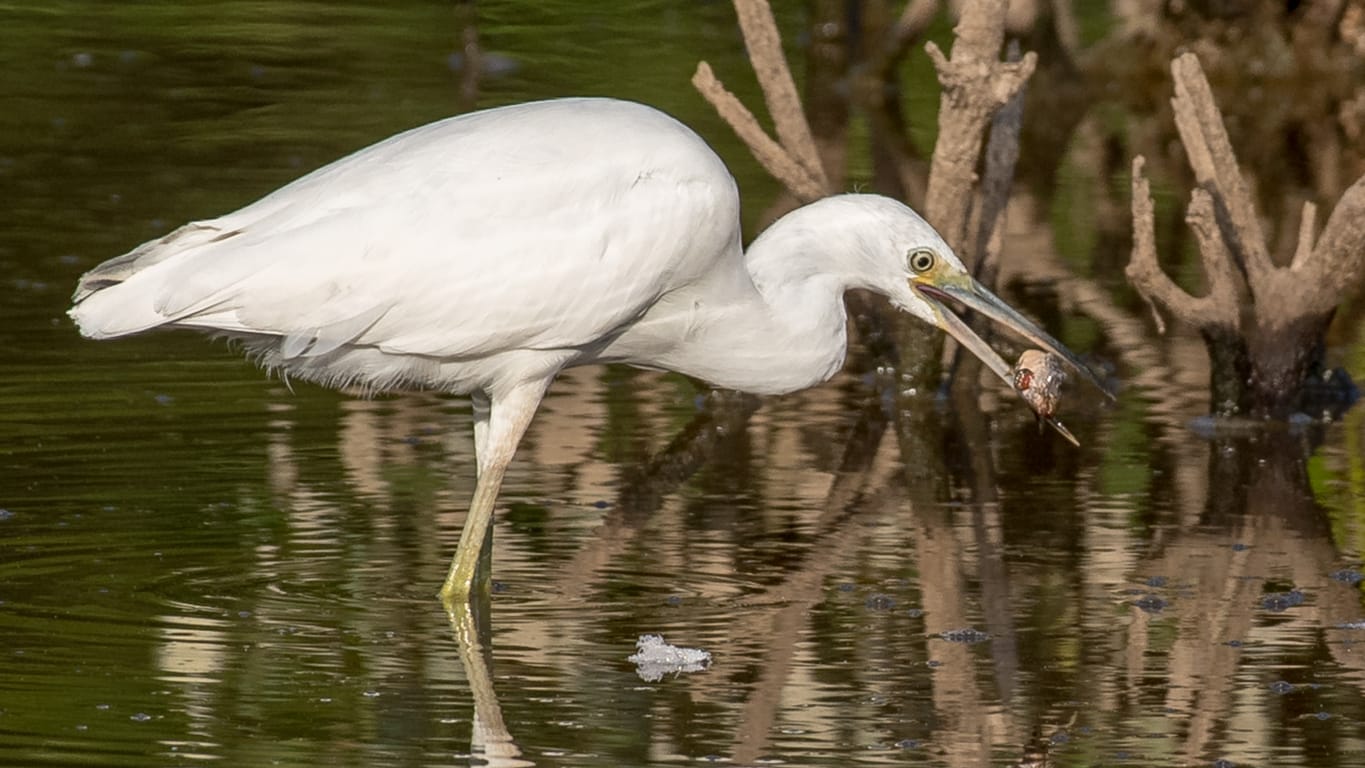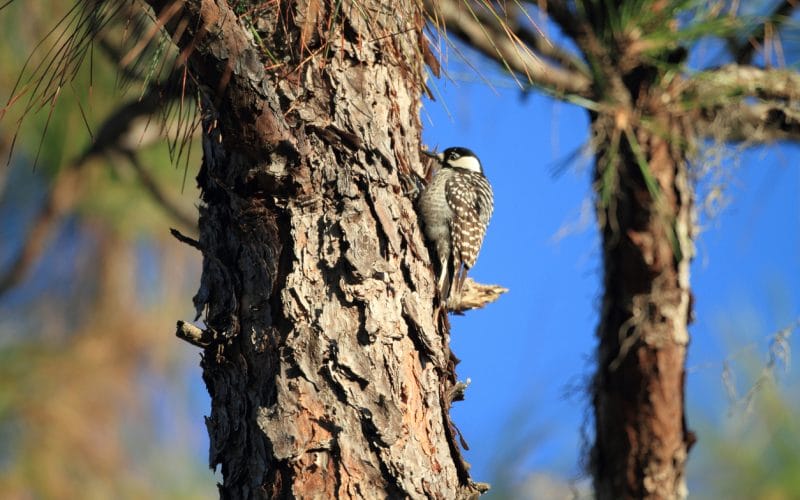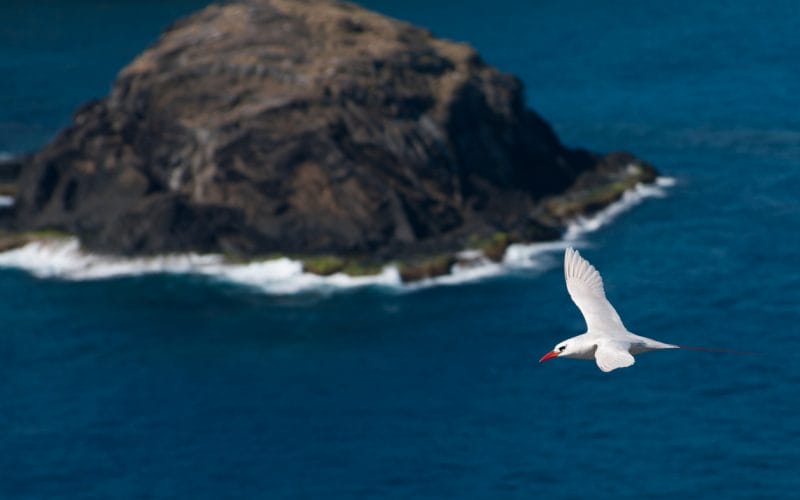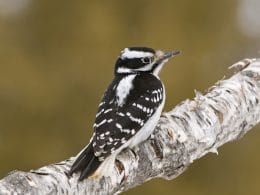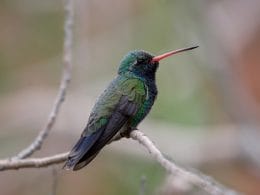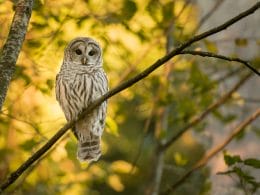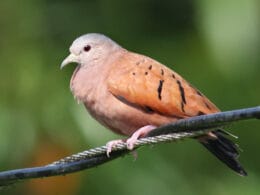Did you know Florida has the second-longest shoreline in the United States?
That’s right! From the Atlantic Ocean to the Gulf of Mexico, almost 1000 miles of Florida’s coastline are accessible for everyone to enjoy.
Birds and coastlines are a natural pairing, so it’s no surprise that Florida has over 500 bird species across the coastline.
In this article, we’ve handpicked 12 exciting Florida seabirds for you to spot in The Sunshine State.
If you’re planning a birding trip, this must-see bird list will help you identify some of the most common birds. Think you can spot them all?
12 Beautiful Florida Seabirds to Spot
Here are 12 stunning beach birds to look for across Florida’s shoreline.
1. Willet

- Scientific name: Tringa semipalmata
- Length: 13 to 16.1 inches
- Weight: 7 to 11.6 ounces
- Wingspan: 27.6 inches
One of the most common Florida seabirds is the Willet.
Willets are usually found near marshes and swamps, where there are plenty of shallow waters to walk in. However, these long-billed and long-legged seabirds can also be found moving around the coastline.
The Willet has grayish-brown plumage and forages by probing its bill in the water. Their diet consists mainly of insects, especially aquatic insects. They also eat small fish, fiddler crabs, and other crustaceans.
You may not be able to identify a Willet while it’s standing on the shoreline. However, once it spreads its wings, you can easily see the distinctive black and white stripes on the wings.
Author Note: Willets are fairly common on Florida’s shoreline, and you can even identify its ringing songs and unique calls in flight.
2. Little Blue Heron
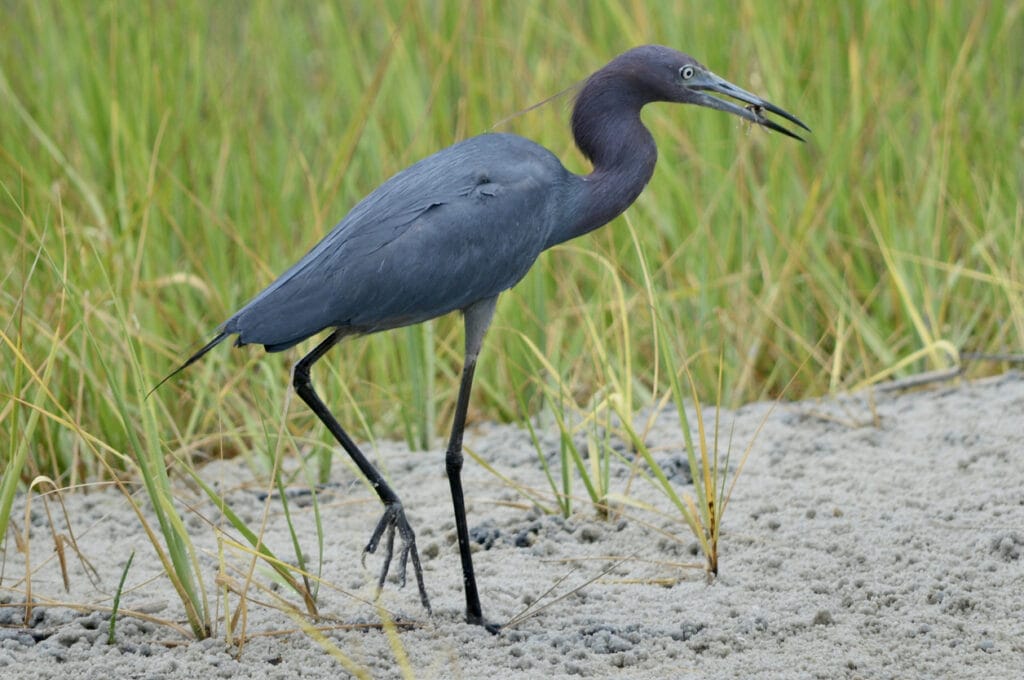
- Scientific name: Egretta caerulea
- Length: 22.1 to 29.1 inches
- Weight: 10.4 to 14.5 ounces
- Wingspan: 39.4 to 41.3 inches
Little Blue Herons live mainly in swamps and marshes, but you can also find them along the shorelines.
The most distinctive thing about these birds is their beautiful bluish-purple plume. They’re common near the shore but usually stay inconspicuous by adopting an extremely quiet approach of movement and foraging.
If you want to identify Little Blue Herons from their relatives, look at their movement while foraging. They usually forage with egrets and white herons, but their deliberately slow movements make them stand out from their relatives.
Most herons and egrets move quicker and in a more erratic manner than Little Blue Herons. Little Blue Herons mostly eat fish and other crustaceans, but they can also eat insects, tadpoles, or even turtles.
3. Tricolored Heron
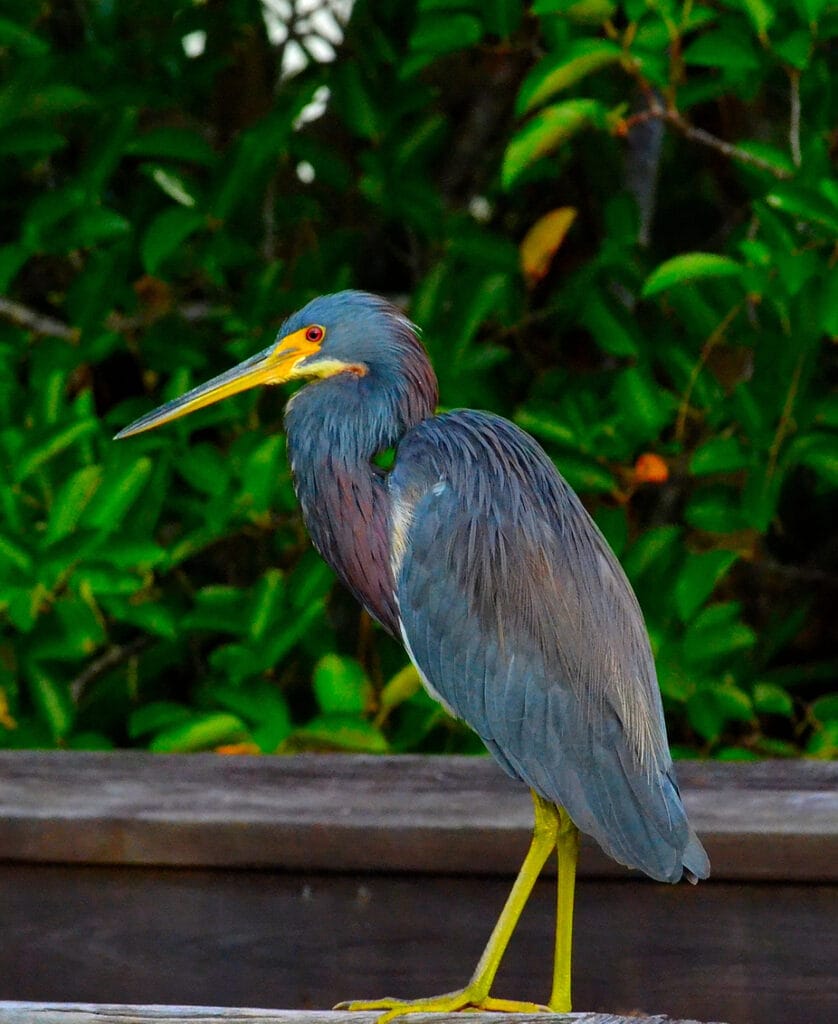
- Scientific name: Egretta tricolor
- Length: 23.6 to 27.6 inches
- Weight: 14.6 ounces
- Wingspan: 37.4 inches
Tricolored Herons have an extremely slender body with long necks, bills, and legs. Its plume is a mix of white, blue-gray, and lavender. This makes them extremely similar to Little Blue Herons.
Author Note: Although sociable during nesting, Tricolored Herons prefer solitary, especially when foraging. Most of their diet is fish and crustaceans. They stay in shallow waters and wade belly-deep around the shoreline.
When foraging, Tricolored Herons take a similar approach to Little Blue Herons. Sometimes, they stand motionless and wait for the prey to come to them. You can identify a Tricolored Heron when foraging if it starts stirring the sediments using one of its feet.
They’re more active when foraging from the sky, usually dashing into the water when hunting schools of fish.
4. Sanderling
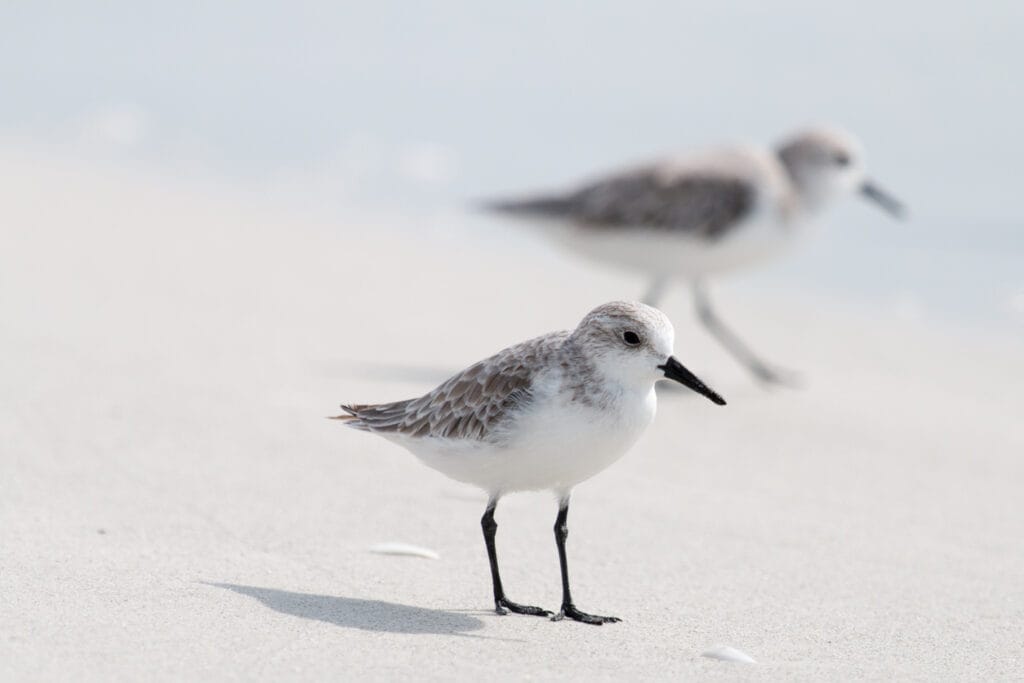
- Scientific name: Calidris alba
- Length: 7.1 to 7.9 inches
- Weight: 1.4 to 3.5 ounces
- Wingspan: 13.8 inches
Sanderlings are adorable mid-sized sandpipers that love chasing waves! They’re commonly found by the beach searching for tiny prey and probing back and forth.
Sanderlings have distinctive black bills and legs. Their plumage is pale white and brown with some black streaks on the tail and back. Sanderlings are one of the most common Florida seabirds you’ll sea at the beach.
You’ll find Sanderlings foraging on insects, worms, and some algae. However, sanderlings sweep the shoreline like a clockwork toy in hopes of finding sand crabs or other tasty invertebrates.
Sanderlings used to be extremely common up until the 1970s. Since then, the number of Sanderlings in Florida has dropped by nearly 80%.
During the breeding season, you may catch a marvelous low display flight as the male Sanderling tries to impress his potential partner.
The male lets out sharp chirring calls and waits till the female glides to the ground. Then, he’ll approach her with ruffled feathers and a hunched-down head.
5. Black Skimmer
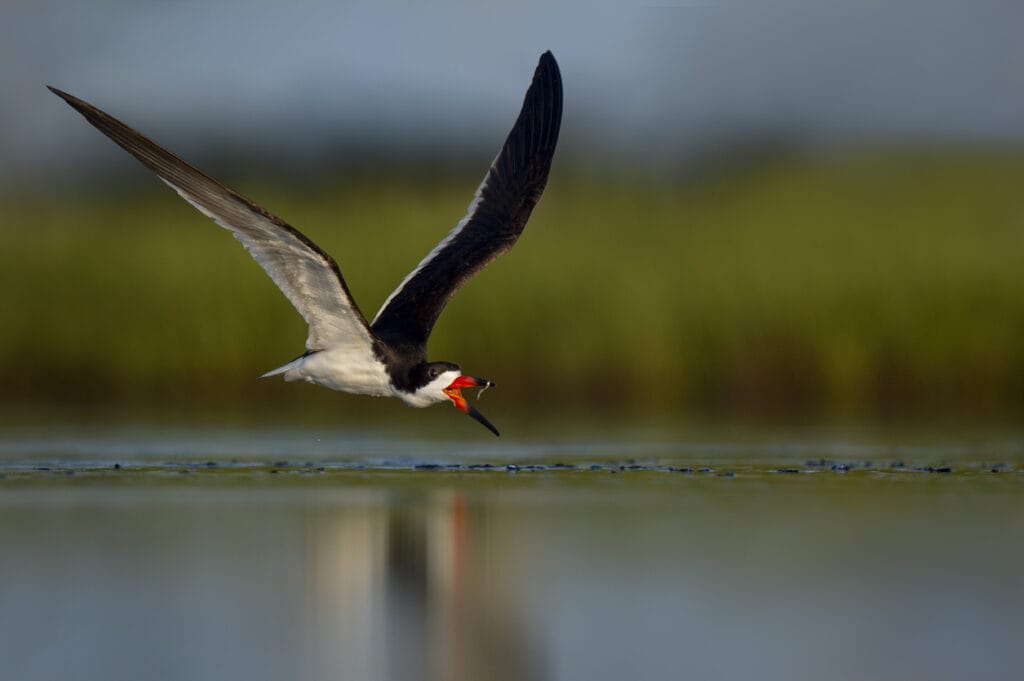
- Scientific name: Rynchops niger
- Length: 15.8 to 19.7 inches
- Weight: 9.3 to 12.9 inches
- Wingspan: 42.9 to 45.3 inches
Black Skimmers are among some of the most beautiful birds along Florida’s coastline. They’re strictly found in the coastal areas of North America and are extremely popular in Florida.
You’ll see Black Skimmers traveling in flocks around the beaches, beating their wings in unison and taking turns in sync.
Their diets consist mainly of fish, but they may also eat some crustaceans. Black Simmers don’t plunge to catch the fish as terns do. Instead, they hover at a close distance and dip their lower mandible in the water.
Once a fish has been caught, Black Simmers immediately snap their upper mandible to catch it. What’s interesting about Black Simmers is that they don’t rely on their eyesight when catching the fish, but their sense of touch.
6. Roseate Spoonbill

- Scientific name: Platalea ajaja
- Length: 27.9 to 33.9 inches
- Weight: 42.3 to 63.5 ounces
- Wingspan: 47.2 to 51.2 inches
Roseate Spoonbills are gorgeous to spot at a distance. Similar to Black Skimmers, their population started to drop in the early 20th century and they were virtually eliminated from the U.S.
Nowadays, you can find Roseate Spoonbills in Florida and Texas. They’re still pretty uncommon, so you might wanna have your camera ready when you spot one.
There’s no denying that Roseate Spoonbills are pretty bizarre up close. They have bright pink plumage and a partly bald head.
Yes, you heard that right. Roseate Spoonbill experience blading just like humans; when they get older, they lose all the feathers on part of their head.
Top Tip: Roseate Spoonbills also have red eyes and a large flattened spoon-like bill (hence the name Spoonbill).
Roseate Spoonbills forage almost exactly like Black Skimmers. They wade in shallow waters with the lower mandible skimming the water. They catch their prey by the sense of touch, although they occasionally use their eyesight as well.
7. Short-Billed Dowitcher
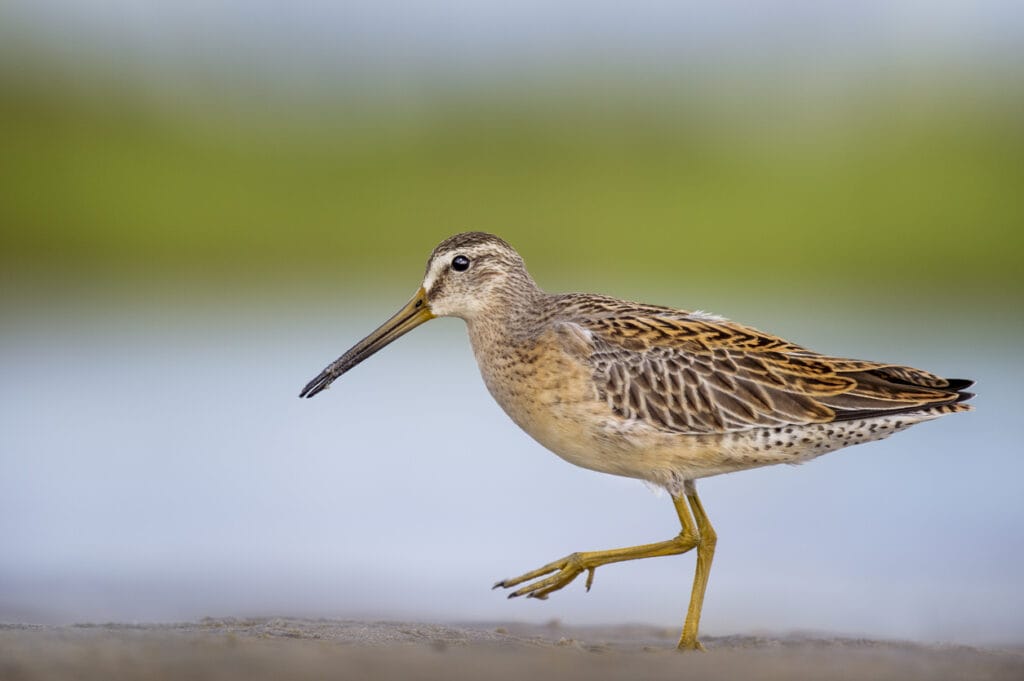
- Scientific name: Limnodromus griseus
- Length: 9.8 to 11.3 inches
- Weight: 3.2 to 4.2 ounces
- Wingspan: 18 to 22 inches
Ironically, the most distinctive feature about Short-billed Dowitchers is their abnormally long bills! Short-billed Dowitchers have short bills compared to the Long-billed Dowitchers, but they’re not short by any means.
Short-billed Dowitchers are chunky shorebirds with brown, golden, and orange plumage.
You may get a chance to come close to a Short-billed Dowitcher before it flies away; they’re incredibly tame shorebirds, especially when they’re feeding.
Their diet consists of insects, aquatic invertebrates, marine worms, and some crustaceans. They forage the shallow waters and dip their bills up and down like woodpeckers.
It’s easier to spot Short-billed Dowitchers when they’re migrating in the winter. Look for them in flocks near tidal wetlands or mudflats.
8. Laughing Gull

- Scientific name: Leucophaeus atricilla
- Length: 15.3 to 18.1 inches
- Weight: 7.2 to 13.1 ounces
- Wingspan: 36.2 to 47.2 inches
Laughing Gulls have a characteristic call that’s evocative of summers in Florida. This handsome gull has a crisp blackhead and grayish-black wings and back.
Laughing Gulls forage while swimming, wading, flying, or walking. They eat fish, insects, and crustaceans. They’re also known to eat the eggs of other bird species, like Royal Terns.
If a Laughing Gull sees the prey in the water, it’ll plunge into the surface and grab the prey. It may also steal food from another bird by snatching it from its bill or landing on its head.
Similar to terns and other gulls, Laughing Gulls build their nests next to each other as a colony. Their nests are found on the ground next to bushes, vines, or shrubs.
You may find Laughing Gulls more at night, especially during the breeding season. Laughing Gulls prefer to forage by the beach when it’s dark and never catch insects when it’s daytime.
9. Great Egret
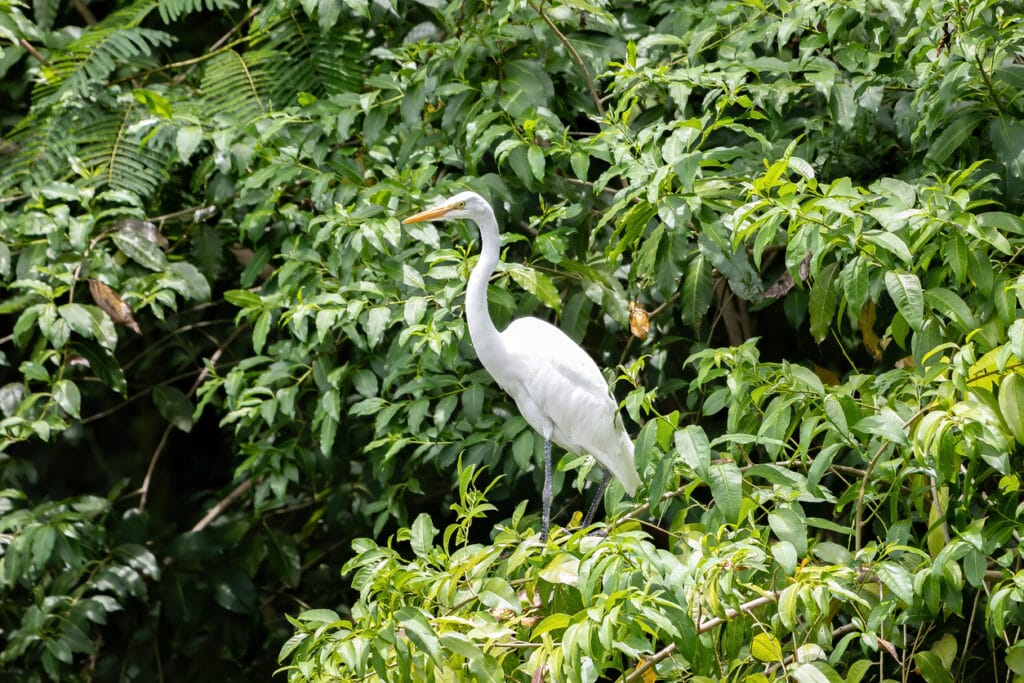
- Scientific name: Ardea alba
- Length: 37 to 40.9 inches
- Weight: 35.3 ounces
- Wingspan: 51.6 to 57.1 inches
Great Egrets are tall birds with long legs and an S-curved neck. Similar to swans, they have all-white plumage, black legs, and a yellow bill.
They’re colonial nesters, so you’ll find them in large quantities near the beaches and other freshwater habitats. You can also find them in Hawaii.
Author Note: Great Egrets feed on fish, crustaceans, aquatic insects, frogs, salamanders, and snakes. They stand or wade in the shallow water and wait for the prey to come to them.
When the prey is within reach, Great Egrets catch them with their bills in a sudden thrust. Similar to Laughing Gulls, they have a tendency to steal food from other bird species.
Great Egrets were once a rare sighting in the U.S., but they’ve started to recover due to increased efforts from conservationists.
10. Royal Tern
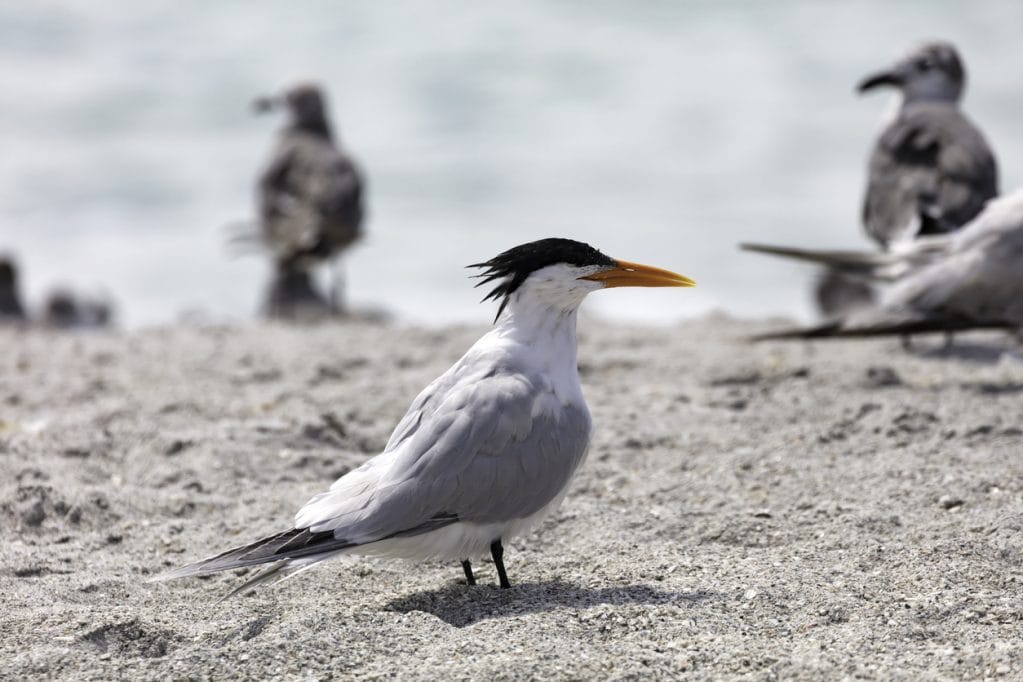
- Scientific name: Thalasseus maximus
- Length: 17.7 to 19.7 inches
- Weight: 13.8 to 15.2 ounces
- Wingspan: 39.4 to 43.3 inches
The Royal Tern is a large and slender bird with long wings and a black crest on its back. Their plumage is white with gray undersides. Their legs are short and with forged tails.
Royal Terns are a common occurrence near shores and sandy beaches. They forage by flying low and searching for food. Once they acquire a target, they plunge a few inches below the water surface to catch the prey.
Sometimes, Royal Terns steal food from other bird species, especially smaller birds. They like to feed at night and will sometimes catch flying fish mid-air. They are common in many tropical regions, including Hawaii.
Their diet consists of small fish and crabs. They also eat shrimps, squids, and other crustaceans.
Royal Terns are extremely social and nest in extremely dense colonies. The courtship takes place in high-altitude spiralings between the male and female.
The male may also bow to the female, offer food to her, and strut around her in circles. How royal!
11. Brown Pelican

- Scientific name: Pelecanus occidentalis
- Length: 39.4 to 53.9 inches
- Weight: 70.5 to 176.4 ounces
- Wingspan: 78.7 inches
Another common Florida seabird is the Brown Pelican.
You can’t mistake a Brown Pelican for something else! They have characteristic yellow heads with silvery-gray and black plumage. During the breeding season, their necks turn reddish-brown.
Brown Pelicans are huge! Their bills are very long and they have a pouch that can store several fish. Their wings can reach almost 80 inches fully stretched. However, Brown Pelicans often keep their wings bowed, especially when gliding.
Brown Pelicans can plunge into the water from as high as 60 feet! They eat fish and rarely other crustaceans.
Although Brown Pelicans appear unwelcoming, they’re actually surprisingly tame to humans. Sometimes, they even approach fishermen and ask for handouts.
They are also very common on the west coast, and can be seen in California and Oregon.
12. White Ibis
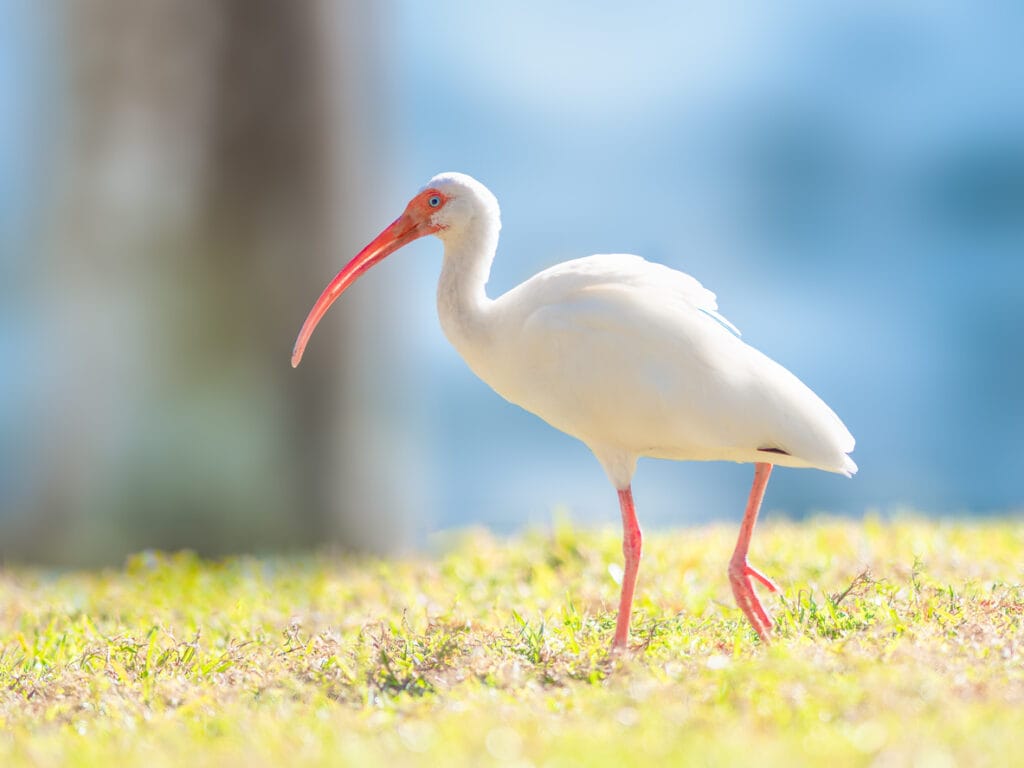
- Scientific name: Eudocimus albus
- Length: 22.1 to 26.8 inches
- Weight: 26.5 to 37 ounces
- Wingspan: 35 to 41 inches
The White Ibis has a body shaped like a football. It’s large and stocky with a long neck and legs. Its plumage is white with some black at the tip of its wings.
Perhaps the most characteristic feature of a White Ibis is the bare reddish-pink skin on its head. The bill is also reddish-pink at the base and black at the tip.
The White Ibis is one of the most common birds in Florida. It wades in shallow waters and probes the water with its bill. It eats crustaceans, insects, and small fish.
In Conclusion
Florida is a dream come true for enthusiast birders. Between hundreds of soaring, squawking, and diving creatures along the shoreline, there’s no shortage of Florida seabirds to spot in The Sunshine State!
We hope you enjoyed our guide on Florida seabirds.
FAQ
Probably the Limpkin. It is not strictly a seabird but does live in and around coastal areas. It is only found in Florida and is famed for its loud wailing at night. 
The Wood Stork is another wading bird of Florida. It is large and white with long dark legs and a huge black bill. 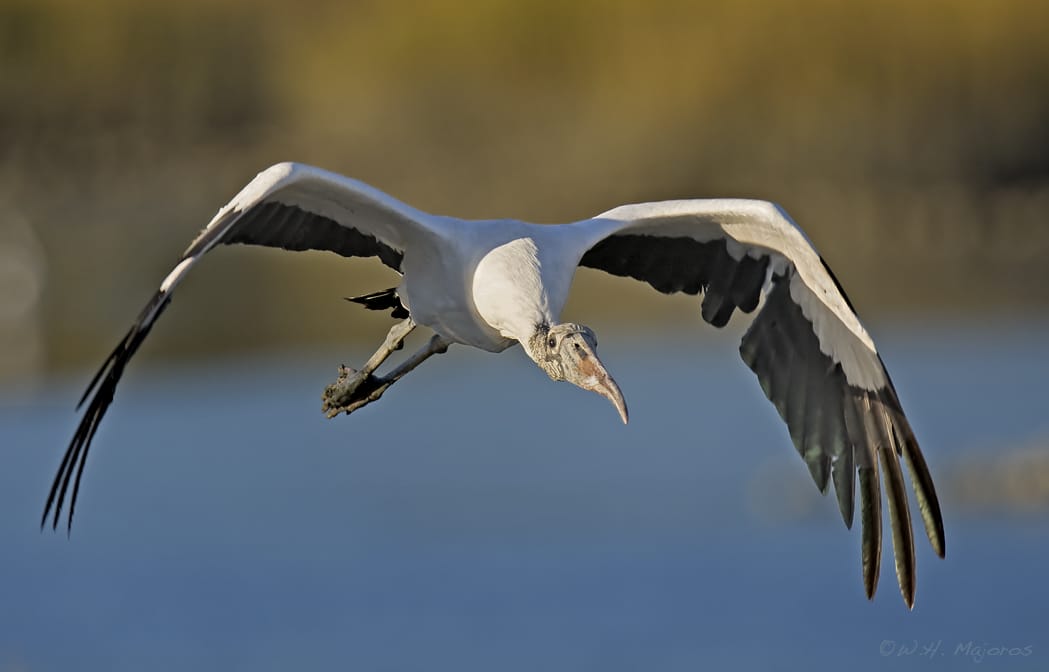
Snowy Egrets have black legs and yellow feet which you don’t usually see as they are stuck in mud!




